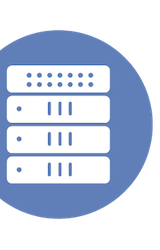Tech Field Day Coverage
Our delegate panel includes independent writers and thought leaders, and we collect their coverage of the event, Tech Field Day presentations, and sponsoring companies here.
Ixia Vision ONE – Tap the Planet
Tony Mattke wrote up his review for Ixia’s Vision ONE solution, which he saw at Networking Field Day in November. Ixia may have a long history in the load testing market, but for Tony, they represent a new entry into the network packet broker market. Vision ONE is Ixia’s solution to the problem of not knowing if you monitoring tools are accurately capturing network traffic. Tony really liked that this all can be configured within a simple UI, calling it “an easy to use toolset with some seriously capability”. Sounds impressive!
Read More:
Ixia Vision ONE - Tap the Planet
Nyansa’s Comparative Analytics
Rich Stroffolino reviews Nyansa’s networking monitoring solution from Networking Field Day last month. He was really impressed how the solution allowed you to measure not just objective measures like latency, speed, and packet loss, but also compare performance among similar network configurations. In a crowded networking monitoring space, it’s a key differentiator that really allows Nyansa to stand out.
Read More:
Nyansa's Comparative Analytics
Cisco live! 2017 in Berlin, Germany — I am back again
We can’t wait to see Peter Engelen at Cisco Live Europe for a Tech Field Day Extra event! He’s excited to meet some old colleagues and get to know some delegates for the first time. Check back for live video from the event, with full coverage soon after!
Read More:
Cisco live! 2017 in Berlin, Germany — I am back again
Forward Networks – A forward approach to formal verification
Tony Mattke reviews what he saw from Forward Networks at Networking Field Day in November. It’s been a little bit since their presentation, but Tony is still excited when thinking about the implications of formally verifying a network. He wants to see it in testing in the real world before passing final judgement, but the capabilities as described at NFD “should be making you drool”.
Read More:
Forward Networks – A forward approach to formal verification
IoT Puts On-Premises Back on the Agenda
In this piece, Alastair Cooke takes a look at the state of storage as we enter the age of IoT. For Alastair, he thinks projects of central object stores being inundated with tons of IoT data miss the point. Instead he sees compute moving close to the edge to be closer to the source of the data, only sending on composites of the gross data tonnage to the data center. As part of this, he thinks Robin System’s software HCI solution has the right approach. It simplified containerization on whatever servers and storage are available, giving enterprises the flexibility and simplicity to move compute closer to the edge.
Read More:
IoT Puts On-Premises Back on the Agenda
Barefoot Networks looks to redefine ASIC in network device design with its Tofino chip
Barefoot Networks gave details about their programmable Tofino chip for switches at Networking Field Day. Keith Townsend gave the presentation videos a look, and thinks they could have a big impact on the networking space. The immediate value is that the programmability should allow for new services to be integrated into switches on a much tighter release window. But more importantly, whitebox vendors could customize switches to individual clients, with hyperscale deployments like Facebook only need a very specific subset of functions to prioritize on performance. And unlike programmable x86 processors in switches, there’s no sacrifice in performance, with Barefoot claiming Tofino can manage 6.5 Tbps.
Read More:
Barefoot Networks looks to redefine ASIC in network device design with its Tofino chip
Uila, the art of visualization
Andrea Mauro got a look at Uila’s data center monitoring solution at Tech Field Day earlier this month. Overall, he think that while it has similarities to other SaaS based monitoring solution, it differentiates in key ways. For one, while Uila generally operates it in the cloud, it can be setup as an on-prem solution. It’s also flexible enough to not just monitor infrastructure, but down to the application level. All of this is wrapped in their excellent visualization engine. Andrea goes into the technical detail of how this is accomplished, but overall he seemed impressed!
Read More:
Uila, the art of visualization
TFD13 Recap – New Veeam Agents and VeeamON
We were thrilled to have Rebecca Fitzhugh for her first Tech Field Day earlier this month. In her first post after the event, Rebecca takes a look at what Veeam presented. They debuted their recovery agents for Windows and Linux, and she came away impressed. These allow for quick recovery on either a volume or file level, with support for recovery to Hyper-V on the Windows variant. Best of all, they’re available to test out for free!
Read More:
TFD13 Recap – New Veeam Agents and VeeamON
SD-WAN from VeloCloud
Peter Welcher reviews what he saw from VeloCloud at Networking Field Day in November. He came away impressed with the company. In a space that’s increasingly crowded by players with a legacy in WAN optimization, VeloCloud distinguishes itself. Peter was particularly impressed by their support for service chaining and partnerships with virtualized firewall vendors. Overall, Peter sees what VeloCloud is doing as proof that SD-WAN has carved out a definite use case in the enterprise.
Read More:
The Road to Root Cause
Work in IT for any length of time, and the dreaded “why is anything slow” question inevitably rears its head. It’s a loaded question, almost impossible to directly answer in that moment, and invariably happens at a bad time. Thom Greene thinks Uila might have a solution to quickly get some answers. Their Virtual Smart Tap provides unified metrics that give you a look into packet flows within virtual machines. They do this by having the Tap sit on each ESXi host and perform deep packet inspection. Thom was definintely impressed by how Uila visualizes this information in their dashboard. It makes it an ideal tool to quickly identify system slow down issues.
Read More:
ZeroStack Adds Learning To Their Automated Infrastructure
ZeroStack demoed their “self-driving” cloud at Tech Field Day last week. Ethan Banks gave it a look and came away impressed. He doesn’t see this as a VMware replacement right now, but the current tools and roadmap the company outlined certainly could make it tempting in a refresh cycle or two. Despite using the buzzwords of “machine learning” and “artificial intelligence” to describe their automation, Ethan saw it as a good way to automate a lot of the typical production tedium.
Read More:
ZeroStack Adds Learning To Their Automated Infrastructure
Whitebox networking – coming soon to an edge near you?
Whitebox networking was a hot topic at Networking Field Day last month. Kevin Myers wrote up a nice summery of what he saw on it. He starts with a brief history, then goes into an interesting application, using whiteboxes outside the data center as edge devices. Big Switch was positioning them that way in their presentation, and the implications of Barefoot Networks also saw them positioning whiteboxes for outside the data center. It’s an interesting trend.
Read More:
Whitebox networking – coming soon to an edge near you?
Tech Field Day 13 – personal experience, photos and many links
Andreas Lesslhumer recounts his experience at Tech Field Day last week in Austin. Overall, he found the time seemed to fly, filled with thoughtful conversations, networking with peers, and delicious Texas brisket. Plus, he got to checkoff an item from his bucket list: the delegates were driven around town in a stretch Hummer! He really enjoyed that most of the companies had trials or sandboxed versions of their solutions ready to start testing during their presentations. Overall it sounds like he had a great time in Austin. It was a pleasure to have him there too!
Read More:
Tech Field Day 13 - personal experience, photos and many links
Riverbed SD-WAN – The Simplicity of Automation in SDN
Do network engineers need to be programmers too? Greg Ferro thinks this doesn’t always need to be the case, especially with SD-WAN solutions like he saw from Riverbed at Networking Field Day. They demoed the ability to push security rule across the entire WAN with a few simple steps, making it far easier for engineers to actually manage their networks. It’s a really great insight into the exciting implications SD-WAN and Riverbed can have on the entire IT networking space.
Read More:
Riverbed SD-WAN - The Simplicity of Automation in SDN
Anuta Networks NCX: Overcoming Skepticism
Chris Marget thought he knew how the networking world worked. Getting various network vendors to play nice with each other required more art than science while editing a text configuration file. It took years of painful experience to be able to do this well. Then Chris saw Anuta Networks present their multi-vendor NCX orchestration, and changed his tune. Anuta claims it can work well between a lengthy list of vendors. They do this by not trying to make all features available, but to focus on a core set that will be useful to network engineers. Chris definitely liked what he saw at Tech Field Day.
Read More:
Anuta Networks NCX: Overcoming Skepticism
Time to Geek Out – Tech Field Day Veeam Style
Clint Wyckoff wrote up a post in his anticipation of his presentation with Veeam at Tech Field Day last week. Make sure you check out the full video coverage of their presentation, including their demo of various Veeam Agents for backup and recovery, as well as the Veeam Availability Platform!
Read More:
Time to Geek Out – Tech Field Day Veeam Style
Robin Systems at Tech Field Day Feb 1-3, 2017
Robin Systems presented at Tech Field Day, and they shared their excitement on their blog. Make sure to check out the video coverage after the event to rewatch all of the specifics of their unique application-aware infrastructure.
Read More:
Robin Systems at Tech Field Day Feb 1-3, 2017
Big Switch Networks Extends VMware Visibility, Adds Mesosphere Support
Big Switch Networks presented an vast array of products at Networking Field Day last month. Drew Conry-Murray was there, and he wrote up a look at their Big Cloud Fabric, the company’s SDN software for data centers. In its 4.0 version, Big Cloud now supports vSAN storage in vSphere, continuing the solutions tight VMware integration. It also supports a variety of orchestration platforms, including OpenStack, Kubernetes, and Mesosphere. In this new version, Big Cloud Fabric continues to refine and fill out its offering.
Read More:
Big Switch Networks Extends VMware Visibility, Adds Mesosphere Support
Tech Field Day “Lucky” 13 – A Preview
The Tech Field Day team is excited to have Dell EMC back for another great Tech Field Day presentation! They published a preview of what they’ll be presenting to the delegates. This includes VxRail, Data Analytics, OEM strategy, and a tour of the Modular Data Center. We’re excited to see it all unfold, so make sure to check back for the live stream, or full videos after the event!
Read More:
Tech Field Day "Lucky" 13 - A Preview
Follow Tech Field Day 13 live
Andrea Mauro is in Austin for Tech Field Day. He published a blog post previewing the schedule of events. Check it out for the embedded live video, and for links to more of Andrea’s great enterprise IT coverage!
Read More:







